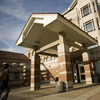A conversation with Stephen Feinberg, leading Holocaust educator

Stephen Feinberg remembers always finding the study of history to be interesting and exciting. During his studies as an undergraduate and graduate student, he was introduced to the history of the Holocaust.
“I became increasingly aware that this was a watershed event in history,” he recalls. “Therefore, I felt that it should be taught in schools.”
Feinberg became an expert in Holocaust education. Through his work at the United States Holocaust Memorial Museum and as a member of the United States delegation to the Task Force for International Cooperation on Holocaust Education, he helped develop programs in Europe, South America, Africa, Asia and the United States.
After many years in the field of Holocaust education, a field which has seen many changes, Feinberg recently retired. “The amount of scholarly material available to educators has increased dramatically,” he reflected. “Across the United States and around the world, there are now museums and Holocaust centers that provide professional development opportunities for educators. Technology has made it possible for them to access and utilize primary source documents, photographs and testimonies; the study of the Holocaust is now part of the education standards in states across the US, and there are multiple courses of study available to teachers.”
Yet in spite of the programs and opportunities now available, Feinberg sees more changes up ahead. “In order to challenge perceptions of the Holocaust based on popular cultural attitudes, educators need to be firmly grounded in the history of the Holocaust and understand that there are immense possibilities offered by the creative use of technology,” he said. “Academic and cultural institutions need to modify or supplement their training and interactions with educators by stressing the importance of digital and media literacy for the twenty-first century.”
The idea of combining digital and media literacy with Holocaust education inspired USC Shoah Foundation – The Institute for Visual History and Education to launch IWitness (iwitness.usc.edu), its website for teachers and students. In April, Feinberg came out of retirement to spend a week at the Institute, where he spent most of his time becoming more familiar with IWitness.
“It’s a remarkable tool,” he said. “IWitness allows teachers and students to ethically explore Holocaust history in ways that are challenging and developmentally appropriate. It also helps them become more digitally literate. Teachers can create lessons that engage students in the reality of present social and cultural issues, and students can make personal connections with the voices of survivors. The very structure of IWitness asks students to think critically, explore various perspectives and differentiate between fact, evidence, interpretation and opinion.”
To give students more exciting classroom experiences, Feinberg says, creative applications of technology should be coupled with teachers who have a sound grounding in the history and literature of the Holocaust. But that’s not all. “As long as there are survivors in the vicinity,” he said, “teachers should incorporate their personal testimonies into classroom learning. It is essential to use testimony. The voice of the survivor brings authenticity and immediacy, and while no single story is the complete history of the Holocaust, each of them adds to our understanding of it.”